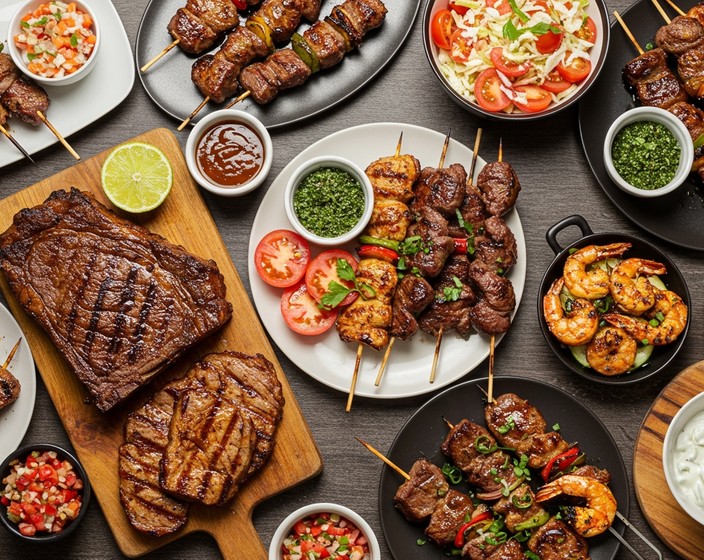BBQ Around the World: 13 International Grilling Recipes to Try




Grilling is a global celebration of smoke, spice, and perfectly browned meat that goes beyond simply setting food on a fire. Different cultures around the world have mastered their own grilling techniques that turn basic items into charred, smokey masterpieces. Every culture contributes own flavors, methods, and customs to the grill, from Southeast Asia's sizzling street food skewers to Texas' slow-smoked briskets.
One flame-kissed mouthful at a time, we get your taste buds tingling with these recipes from across continents, whether you're a devoted BBQ enthusiast or just here for the picnic vibes. Are you prepared to light the grill? Come on!
Are you prepared to light the grill? Come on!
Either way, it’s all about gathering around the grill and enjoying the feast!
Asado, their iconic barbecue, features slabs of beef, ribs, and chorizo slow-cooked over a wood-fired grill (parrilla). The secret? Patience and a good chimichurri sauce, a zesty blend of parsley, garlic, vinegar, and chili flakes. Want to grill like an Argentine? Skip the gas—only wood or charcoal will do.
Yakitori, or grilled chicken skewers, are seasoned with either salt (shio) or a sweet soy glaze (tare) and grilled over binchotan charcoal for an unbeatable smoky taste.
Craving more variety? Yakiniku, Japan’s take on tabletop grilling, lets you cook thinly sliced beef, pork, and veggies right at the table. Then there’s Hibachi, a 200-year-old method that uses a cast-iron grill to enhance the natural flavors of meats, vegetables, and rice with just a touch of salt, pepper, soy sauce, vinegar, and garlic.
Want a pro tip? The best grilling tool is an iron griddle over real charcoal, though gas grills are commonly used in restaurants.
Fun fact: some say braai dates back to when our early ancestors accidentally dropped meat into fire and discovered flame-grilled goodness!
Picanha, a perfectly grilled beef cut seasoned with just salt. Serve it with Brazilian Tomato Slaw and pair it with farofa (toasted cassava flour) and a caipirinha cocktail for the full experience.
Each region has its own spin, making it a versatile street food favorite.
Today, slow-cooking over pimento wood gives jerk dishes their signature smoky kick. Got an oil drum? You’ve got yourself a DIY jerk smoker!
Make your own spice mix and start cooking! How about some jerk shrimps?
Whether stuffed into tacos, served alongside rice and beans, or topped with fresh salsa, Carne Asada is a fiesta for your taste buds!
Invite your neighbors, gather your friends, and let’s get grilling—because BBQ isn’t just about the food, it’s about history, culture, and bringing people together.